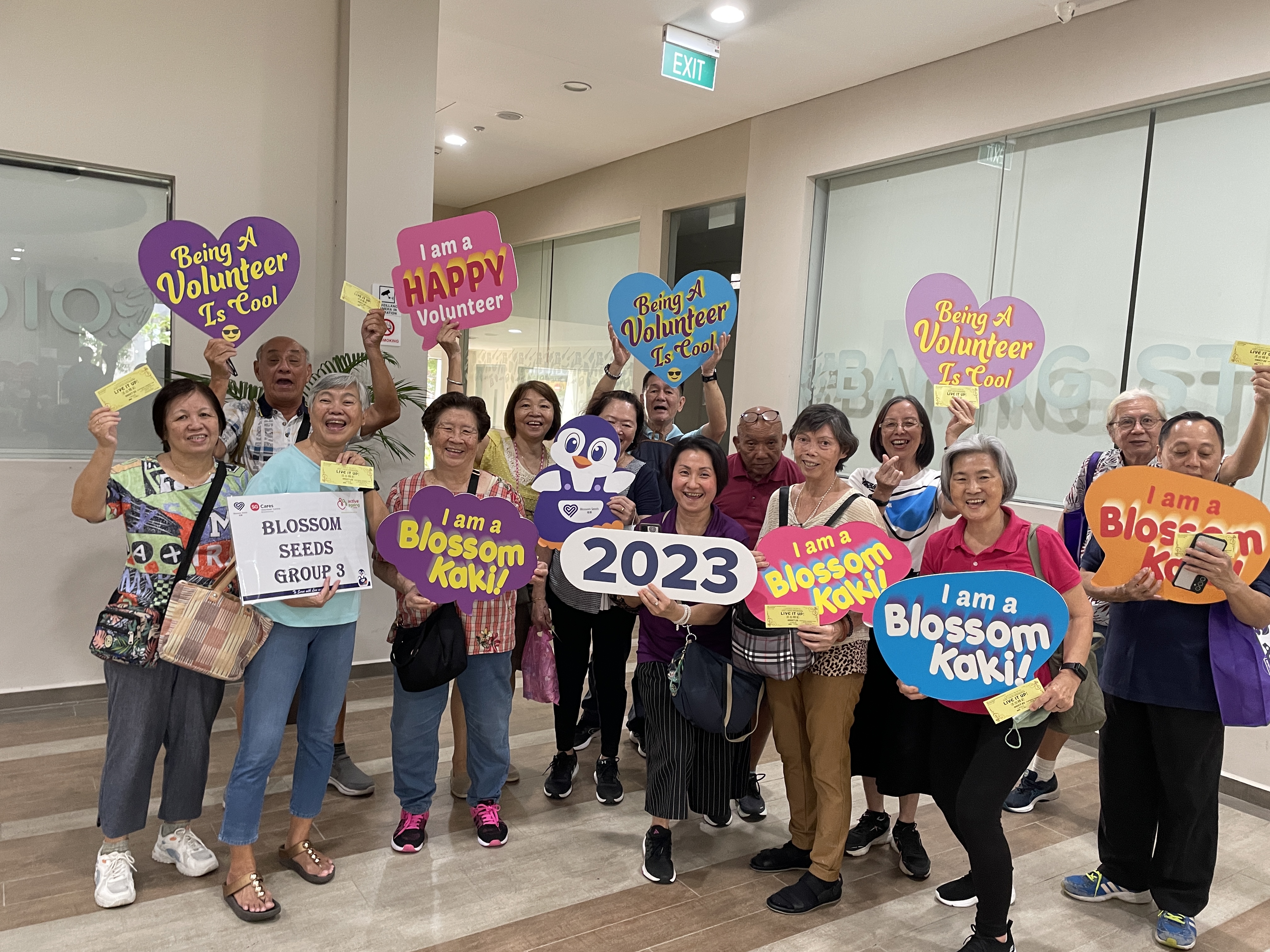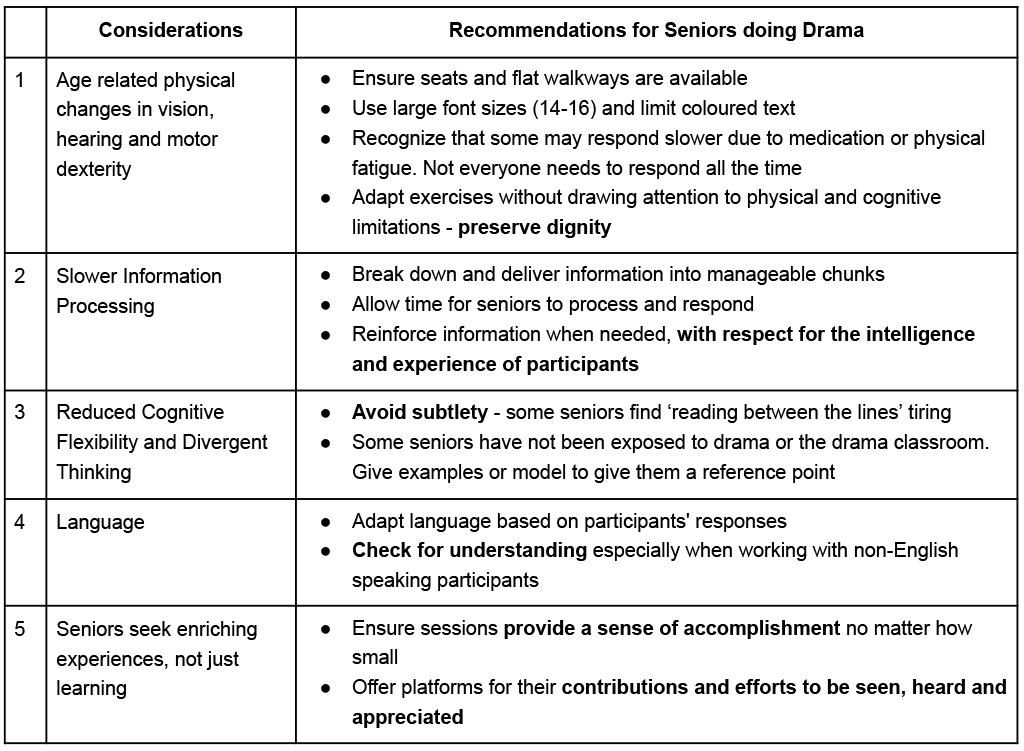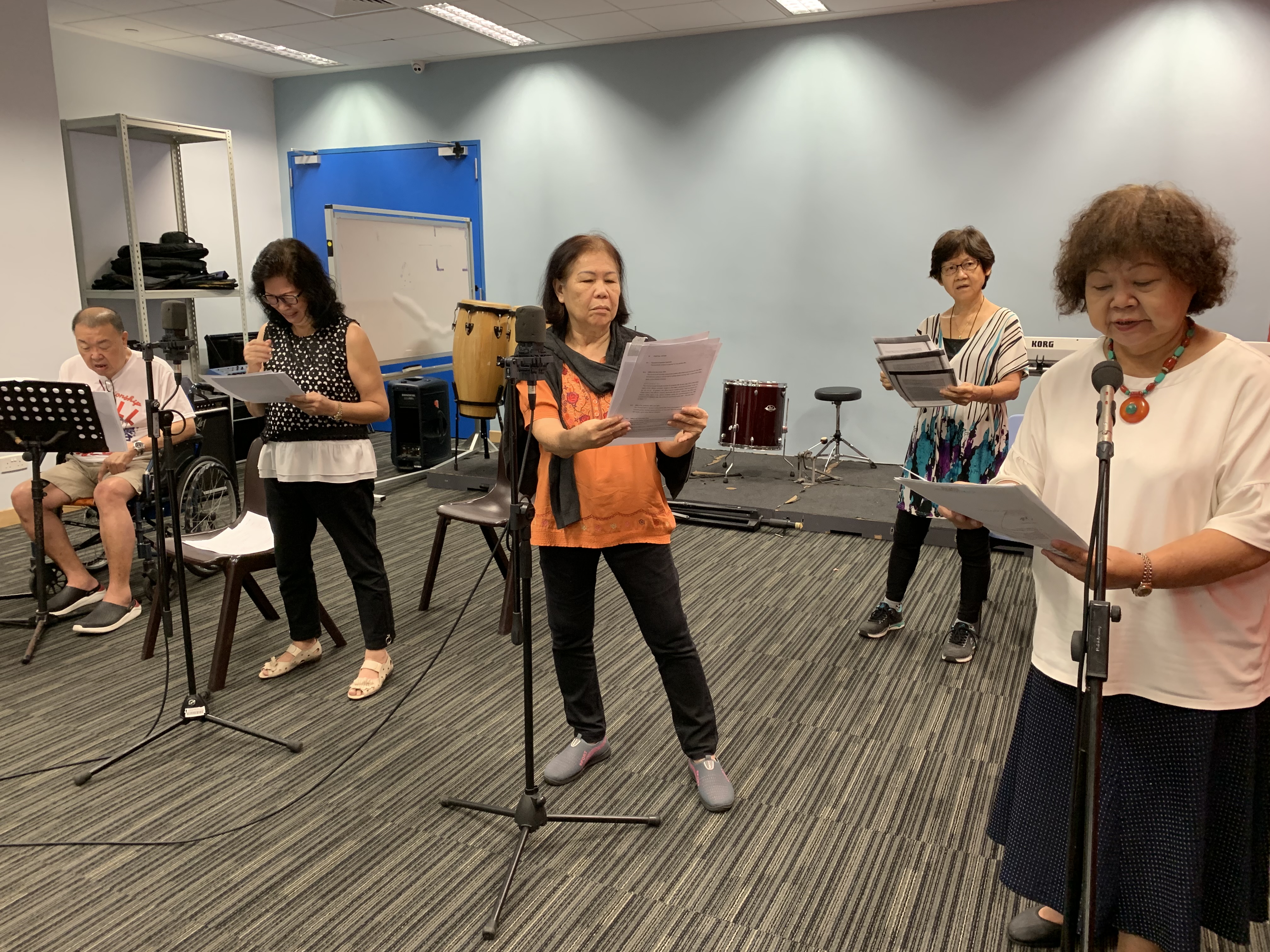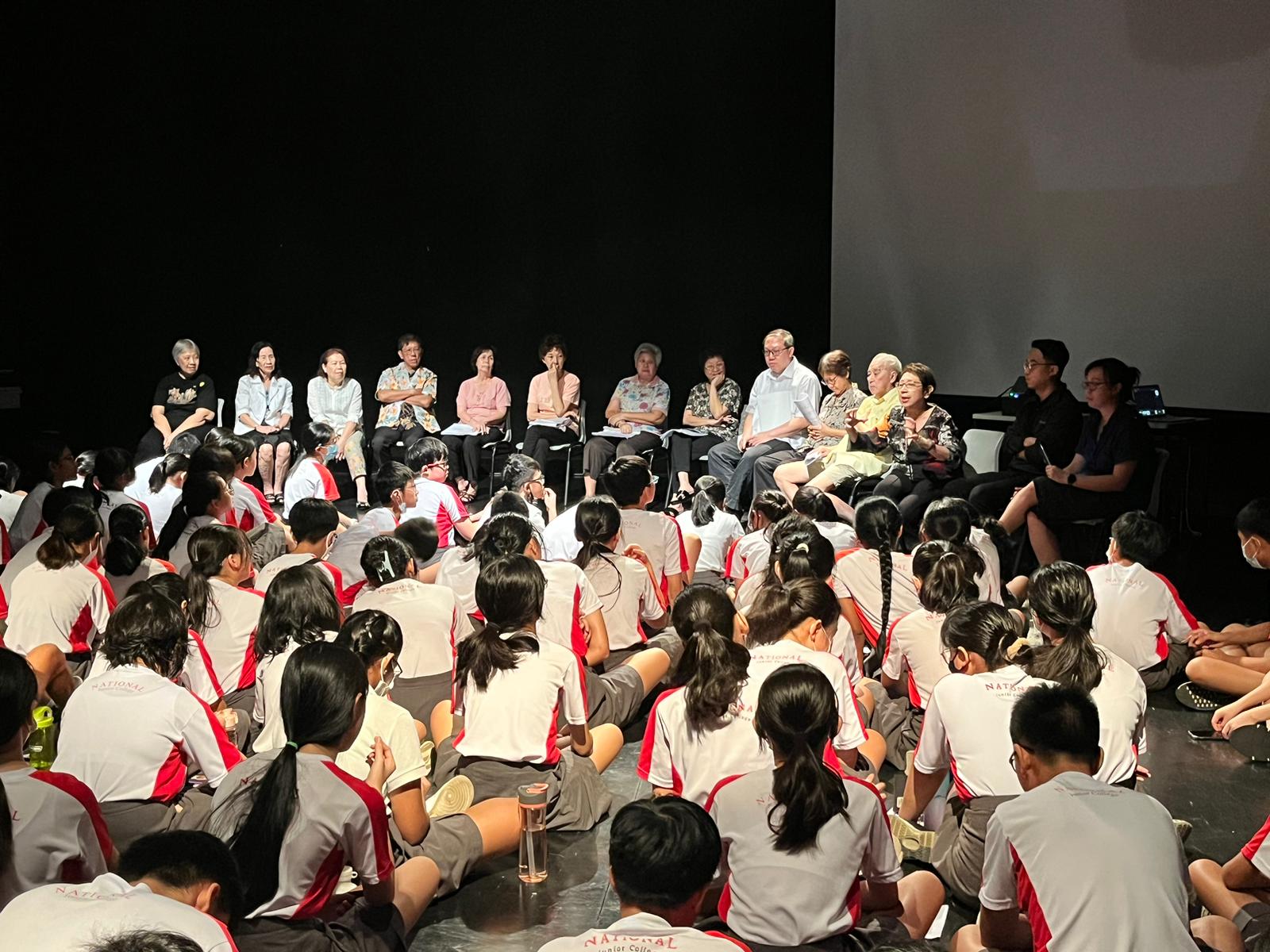Helping Seniors Age Well Through Drama: Insights from Peggy Ferroa
by Peggy Ferroa
Why This Matters: Singapore’s Ageing Population
Most of us know that by 2030, one in four Singaporeans will be 65 years old. Globally, the country is also ranked as the 8th highest in life expectancy. This means that Singaporeans live an average of 83 years. If you don’t fall victim to the top three causes of death – cardiovascular disease, stroke or cancer, you will probably live with age related issues like arthritis, dementia, a chronic disease or frailty. Sounds bleak, doesn’t it?
However, if you look from a different perspective, the ever-prepared Singapore has already set up the infrastructure – lifts and ramps, as well as numerous spaces to encourage active ageing. Accessibility, space and ready participants. The stage is set for artists and arts educators to step in and create experiences so individuals living to 83 years and beyond feel they are still valued, have a purpose and are able to thrive.

Community Audience at Live It Up! by The Glowers Drama Group
The Role of Drama in Ageing: Insights and Strategies
Ageing isn’t just about diminished physicality – it is also about navigating identity shifts, memory changes, and evolving social roles. As people age, cognitive functions such as memory, attention, and problem-solving skills slow down. At the same time, social circles shrink – children move away, colleagues disappear, and unfortunately, friends pass away. Loneliness and isolation become the social ailments of old age.
Between 2016-2017, a study funded by the National Arts Council (NAC) surveyed 1,000 people aged 50 and above to examine how arts participation affects well-being. The findings showed that even passive engagement led to a higher quality of life, better perceived health, and greater social connectedness compared to non-art attendees.
This is echoed in Ageing, Drama and Creativity: A Critical Review (Rickett, M. and Bernard, M., 2014), which examined 77 publications on theatre and drama for older adults. It found participation in drama resulted in:
- Enhanced health and overall well-being
- Strengthened social connections
- Opportunities for continuous learning
- Increased empathy and self-reflection
- Stimulated neuroplasticity, potentially slowing cognitive decline
Rather than focusing solely on the end-product—such as a performance, artists and educators should consider these five benefits when designing drama sessions for seniors. The process of engagement often holds deeper and longer-lasting effects than the final presentation.
Drama requires no prior knowledge nor special tools. It starts from lived experience, of which older adults have plenty. Drama is also inherently social. It provides a means for social connections through shared experiences, stories and ensemble work. While some participants may be expressive and others reserved, the key is to be sensitive and attuned to different personalities, learning styles and physical or cognitive abilities. By balancing structure with flexibility, drama practitioners can create a safe, inclusive space where seniors can express themselves freely.
These skills take time and practice to develop. While each group of participants brings the practitioner a new learning experience, it also requires learning from professionals in other fields – occupational therapists, social workers and healthcare professionals. The following table is based on various sources and personal experience. It offers guidance for drama educators and artists working with seniors.

With this table in mind, let’s look at two examples - one involving active, independent seniors and the other, those in hospice care, to see how these five points are applied.
Example 1: The Glowers Drama Group
The Glowers Drama Group has been an inspiring example of how seniors can thrive through drama. They are Singapore’s first senior’s drama group that perform in Chinese dialects and English. I have been their producer and playwright since 2008 and collaborate with them on projects spanning community, national, and international levels. Having worked with them for close to 20 years, I have them and their founder Catherine Sng, to thank for enlightening my practice on working with seniors.
The plays I write for them emerge from interviews, discussions, improvisations, and workshops. This approach ensures collective involvement in the creative process, even for those who may not perform on stage. I try to write for as many people who can commit to rehearsals and can fit on the stage at the venue. Each time there is a re-staging, there is a minor re-write.
For this group of 20-30 participants (aged 50-85), point 4 and 5 in the table above, are especially relevant. Many have been on part of the group for over a decade, making time to attend weekly sessions diligently. Many members of the group describe the sessions as liberating because they can step away from domestic duties, be with their friends and walk away having done something constructive – scene work, improvisation or devising.
During the pandemic, I adapted one of my new plays into a radio play. Chap Lau is a nostalgic piece about early life in HDB flats. Its intention was to reach isolated seniors through an online platform. Classes were conducted over zoom online and the group learned a new skill – voice acting.

The Glowers recording Chap Lau during the pandemic
It was during this time as well, that I saw the challenges of ageing. Many of the members had aged 12 years since I first worked with them. During the recording of Chap Lau, which was held at one of the studios of ITE Central, many were concerned about stairs, seating and the proximity of toilets. I also saw how I had to increase the font size drastically and had complaints about coloured font being hard to read (point 1).
Because a radio play relies heavily on playing in an invisible setting and not interacting face to face with an actor but with a mic, I saw point 2 and 3 very clearly. The cast couldn’t embody the text as they normally did, and it was mentally straining. We just had to spend more time helping the cast to make sense of the text and performing to a microphone.
The Glowers have two plays that have been staged multiple times, each with a new iteration to accommodate the size of the cast and their challenges with ageing. Upcoming performances include:
- Kampong Chempedak, a play about villagers having to leave their village due to urbanisation. This is the prequel to Chap Lau and has been performed at NAC’s Silver Arts Festival, the Gold Theatre Festival in Saitama, Japan, and the George Town Festival in Malaysia. It has also been performed as a play read in a secondary school. The play’s fifth re-staging will be at the International Community Arts Festival Hub organised by Drama Box on 12 June 2025.
- Live It Up! was the group’s first English musical about active ageing staged in 2008. It made a comeback as a multilingual jukebox musical in 2023 as part of The Glowers’ 15th anniversary celebrations. It’s third iteration will be restaged in partnership with Gateway Theatre from 31 Oct – 2 Nov 2025.
More information on The Glowers and their plays can be found here: http://theglowers.com/
Example 2: This is My Song
This is My Song was a project in partnership with the Esplanade, Theatres on the Bay. Our aim was to use songs as a starting point for personal stories. These stories, accompanied by a song, would then be recorded and put on a thumb drive as a memento for the participants.
The 7 participants were in their mid 70s to late 80 and had varying cognitive and physical abilities, requiring careful consideration of points 1, 2, 3, and 5 from the table. Only one had high physical, cognitive and communicative ability, while the rest had weak memories and needed wheelchairs or mobility aids.
Sessions had to follow the same sequence, so the predictability became a source of comfort. Introducing too many new ideas to the group like that can cause confusion and anxiety. Participants need to succeed, even if it’s in a very small way.
From the table, the only the only thing I didn’t need to consider was language as they all spoke English well. For the one Malay speaking participant, the Esplanade had a translator on the team to be by her side all the time.
To address points 2 and 3 in particular, I used a lot of stimuli from the past – familiar music, as well as items from the 50s and 60s. Each piece of music or item was presented one at a time and I would always lead in the discussion or conversation with a personal story or anecdote. This method of modelling gave the participants time to connect to their own experience. Most times, only one or two would say something, but I would always find ways for the conversation to reach the quieter ones – a nod of the head or a single word is a start, and good enough.
The first few sessions were a struggle for me, and the one hour spent with them seemed very long. This was because they were unfamiliar to me and the structure of the sessions. There was also the time needed for the building of trust and relationship. This was important and very necessary if we wanted them to share stories. I was very pleased that the Esplanade team understood this and didn’t pressure me to get a story from each and every one.
After eight group sessions, I had understood each personality and what they were comfortable to share. I created a series of questions and prompts to help them record their stories. The group unanimously agreed that You are My Sunshine was the song that remined them of the people they loved. I used this as a backdrop of their stories and put their voices and their photos from the sessions to preserve a tangible memory.
The final product was met with pride, not only by the participants but also by their families and hospice staff, who saw them in a new light.
This piece of work was important to me because I realised that even at a time when lives are coming to a close, people are able to create something beautiful and meaningful. Drama is for everyone, at every stage of life, offering dignity, agency, and moments of happiness for participants and the audience.
The Role of the Artist and Arts Educator in Ageing and Well Being

Kampong Chempedak post show dialogue with students
Seniors bring a diverse range of abilities, experiences, and expectations to drama sessions. Artists and educators must not only be flexible and responsive to their evolving needs, but increase their spectrum of techniques and methodologies. Recognising this, Dr. Felicia Low and I launched the first Geragogy and the Arts Conference in 2024. It brought together educators, artists, and researchers from different arts disciplines to share best practices for working with older adults.
The second edition of the conference is scheduled for the end of this year. Meanwhile, insights from the first conference can be found here: https://www.academia.edu/124932794/Geragogy_and_the_Arts_Conference_A_Hybrid_Critical_Conference.
Conversations are now turning to integrating drama and the arts into senior care. The artist and arts educator can emerge as practitioners who understand that ageing is not just about longevity, but about living fully – with creativity, purpose, and human connection.



